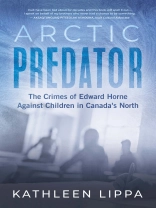The shocking crimes of a trusted teacher wrought lasting damage on Inuit communities in Canada’s Arctic.
In the 1970s, a young schoolteacher from British Columbia was becoming the darling of the Northwest Territories education department with his dynamic teaching style. He was learning to speak the local language, Inuktitut, something few outsiders did. He also claimed to be Indigenous — a claim that would later prove to be false. In truth, Edward Horne was a pedophile who sexually abused his male students.
From 1971 to 1985 his predations on Inuit boys would disrupt life in the communities where he worked — towns of close-knit families that would suffer the intergenerational trauma created by his abuse.
Journalist Kathleen Lippa, after years of research, examines the devastating impact the crimes had on individuals, families, and entire communities. Her compelling work lifts the veil of silence surrounding the Horne story once and for all.
Tabla de materias
Cape Dorset, January 23, 2003
Introduction
PART ONE
- Frobisher Bay, October 1985
- Sanikiluaq, 1971–74
- Sanikiluaq, 1975–77
- The Disappearance of Alec Inuktaluk
- Wedding Bells
- Cape Dorset, 1978–80, 1982–83
- In the Portable
PART TWO
- Who Was Ed Horne?
- Bert Rose
- Grise Fiord, 1980–81
- Nakasuk School, 1981–82
- “He Killed My Brother”
- The Piano
- The Arrest
- “Faked Bad”
- Out on Bail
PART THREE
- Her Majesty The Queen Vs. Edward Horne
- Prison and Release
- Another Criminal Case
- Uncle
- Criminal Case #3
- Civil Cases
- The “Pretendian”
- The Aftermath
- The Man and the Myth
- Kinngait, March 2022
Acknowledgements
Notes
Selected Bibliography
Index
About the Author
Sobre el autor
Kathleen Lippa grew up in St. John’s, Newfoundland. She has worked as a reporter at newspapers across Canada, and eventually served as Bureau Chief for Nunavut News/North in Iqaluit. She lives with her husband in Ottawa.












